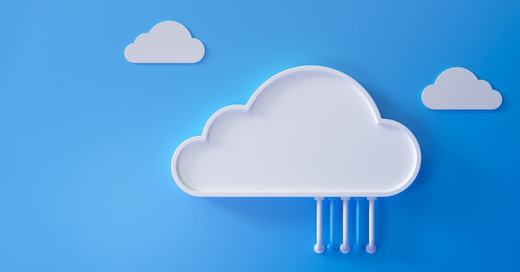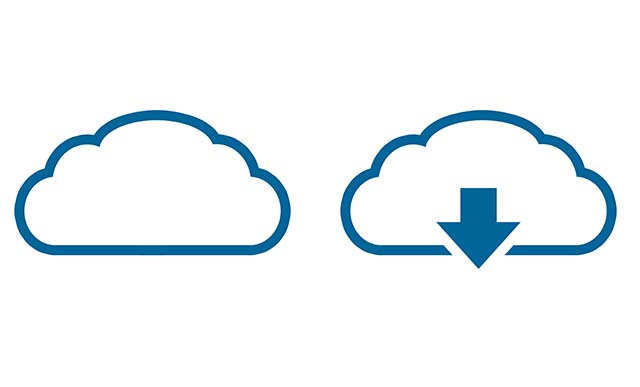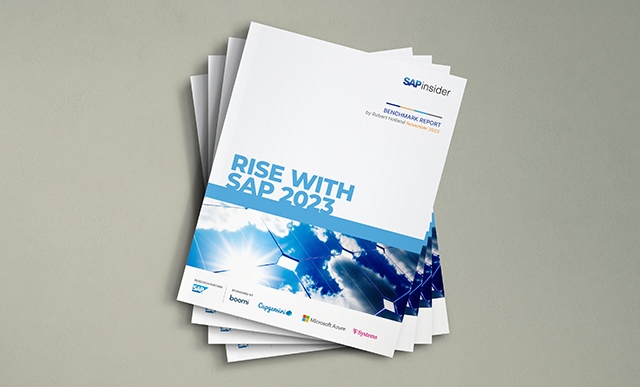Microsoft’s Joao Couto Answers Questions About Expanded SAP-Microsoft Partnership, RISE with SAP, and Other Matters
On January 22, 2021, SAP and Microsoft announced an enhanced partnership. SAPinsider sat down for an exclusive interview with Joao Couto, Vice President of the SAP Business Unit at Microsoft, to explore what the partnership means for the recently announced RISE with SAP offering. Couto also shared insights into how companies can take advantage of accelerated digital transformation with SAP S/4HANA and Azure. Here’s what he had to say.
Q: What do you hear Microsoft customers saying about RISE with SAP?
A: RISE with SAP, the new subscription-based, digital-transformation-as-a-service offering for helping companies address their business transformation challenges, is generating a lot of curiosity as well as excitement among Microsoft’s customers.
RISE with SAP makes it very easy and fast for the vast majority of SAP users that are still running legacy enterprise resource planning (ERP) environments on premise to modernize and move to the cloud. It also includes support by leading partners around the world — partners that businesses can trust.
This is a powerful combination that lowers the risk of IT modernization, and of the move to SAP S/4HANA. We’re hearing that businesses are interested in learning more, and evaluating RISE with SAP versus the alternative paths they were already familiar with, such as continuing to run their own environments; outsourcing everything to partners; or perhaps decoupling everything and contracting to have bits and pieces run by SAP, bits and pieces run by partners, and bits and pieces being put into cloud infrastructure.
Q: What specific pain points are businesses experiencing today that make RISE with SAP attractive?
A: First, there are the very broad implications of COVID-19. Familiar business models no longer suffice as the need to predict demand becomes more essential, the number of employees who need access to systems remotely grows, and security requirements become more important than ever. Also, we’re finding our customers want transparency so they know what is really going on in their businesses, and can accelerate their innovation cycles.
And with that acceleration of innovation cycles, companies want to update their systems faster, which requires having a more standard ERP model as opposed to a system with large levels of customization that may prevent systems from being updated regularly.
The challenge is that customers have spent many years investing heavily in their existing legacy SAP systems, applying complex customizations that almost keep businesses hostage because they are slower in their abilities to respond to the very fast pace of business needs. When they are able to respond, it’s very costly because all those customizations need to be maintained.
Unfortunately, the customizations also prevent organizations from having streamlined paths to modernize their SAP environments and get to the new hero of SAP systems, SAP S/4HANA.
Many companies have a multimillion dollar transformation project ahead of them, and it carries a lot of risk, which is where Microsoft and our Azure cloud come in — these companies are looking to us to help them out.
They can get their SAP environments into the cloud and get some immediate savings — but also a lot more flexibility. They also become much more agile about analyzing the data and combining it with their non-SAP operational data.
RISE with SAP helps reduce complexity and risk by combining the flexibility of a highly attractive commercial model with a very easy, subscription-based cloud model. It provides a clear answer to companies concerned about the move to SAP S/4HANA and the cloud when SAP takes over the technical migration, then subsequently the technical operation of their SAP environment. It eases the path to becoming a modern, digital enterprise.
Q: SAP customers have lots of options in today’s marketplace. Why should they choose Microsoft?
A: The first reason is that the partnership between Microsoft and SAP has existed for more than 25 years. This long-standing partnership is rooted in a deep engineering connection between Microsoft and SAP.
What that means: an SAP system running on Azure runs better than on anything else. Customers can trust us at a very high level. Microsoft runs its own SAP system on Azure, and SAP runs its own SAP system on Azure as well. You can see that the Fortune 500 and the largest companies in the world run their largest, most complex SAP systems on Azure precisely because of our experience.
At the end of the day, SAP systems are mission-critical — you don’t want to mess around with them. SAP customers that choose to run their systems on Azure can build on the deep level of trust, engineering expertise, and thousands of successful customer experiences shared between Microsoft and SAP.
The second argument is security.
As a result of COVID-19, the increased level of security you get with Azure becomes more important than ever, including how SAP Identity Management can be used with our own Azure Active Directory, connecting SAP events with our Microsoft events and exposing them to Azure security services, and reinforcing all the networking Azure is also fully compliant with key regulatory environments for financial services, health, and other industries with very specific security and privacy requirements.
Then there are all the analytics and information management services that the Microsoft world offers. Microsoft customers point to their ability to look at the SAP system — not just in isolation, but in combination with systems and data that reside outside the SAP system — as a key benefit. With Azure, Microsoft is able to provide users with very easy access to information in a very flexible way.
And then, lastly, deep collaboration and engineering work unites both companies.
Microsoft and SAP customers trust that they not only have well-tested and well-proven architectures and frameworks to migrate and manage their own SAP environments, but they also have exclusive access to innovation. Through this partnership you almost have an insurance policy that you are on the leading edge of innovation, because we will be providing our customers access to our technological advancements before anyone else in the world gets them.

Joao Couto, Vice President of the SAP Business Unit, Microsoft
Q: What will the recently announced partnership expansion between SAP and Microsoft enable companies to do that they couldn’t do before?
A: The partnership is structured to deliver a lot of differentiation and innovation to market, but in addition to the security that I mentioned, there are three ways in particular that customers will gain from the partnership: integration, automation, and collaboration.
First, Microsoft Teams (Teams) is going to be tightly integrated with specific SAP applications, including SAP S/4HANA, SAP SuccessFactors, and SAP Sales Cloud.
Microsoft and SAP plan to provide a complete roadmap of integrations, which means that users will be able to use all the functionality of Teams within whatever SAP applications they deploy. This will happen in a native way, enabling customers to run their own SAP applications without the need to go outside those applications to do things like collaborate with teammates, check on their work statuses, and launch video calls.
For example, with the SAP Sales Cloud integration, account executives could launch a remote video call with a customer using Teams and pull data from the SAP system to have all the context of that customer on the screen. This integration will enable seamless operations that will tremendously simplify the way your users will interact with customers as well as with partners.
The second way that customers will benefit from the partnership is through automation frameworks to build SAP S/4HANA environments easily on Azure and increase operational efficiency. Microsoft and SAP will provide guidance on setup, reference architecture, and tool usage.
We’ve also strengthened our partnership with SAP Cloud Appliance Library to optimize the provisioning experience of both production and non-production environments on Azure.
Ultimately, we’re going to offer a more complete set of tools to assess environments, to plan migrations, and to do the actual migrations of data and modules. These tools will allow you to be very flexible and to decide which sorts of data you want to migrate. For example, do you really need to migrate the data of organizations that your organization divested years ago?
Alternatively, you can do a deep analysis of the usage levels for different modules of SAP and leverage the opportunity to simplify your environment. These automation tools are designed to help you be very pragmatic and focused on the way you do your migration from the legacy world into the new world of SAP S/4HANA.
With these automation tools, together Microsoft and SAP will make the migration experience as efficient as possible, leveraging AI tools and automation routines so that you won’t need to worry about backups and disaster recoveries and other routines that have to run. With SAP, Microsoft is enabling our customers to have a very low cost of SAP ERP migration to SAP S/4HANA, as well as low total cost of ownership (TCO) for running it on Azure.
Third and finally, we will significantly invest and deepen our integration to strengthen collaboration. We do this by opening up communication between product planners, buyers, category managers, and the suppliers you rely on to keep your business operational. Your employees can automatically send messages, schedule meetings, and share critical information through Microsoft Teams without ever leaving the SAP S/4HANA planning or procurement solution. And instead of navigating from system to system, employees can join development discussions or launch peer-to-peer conversations directly from their SAP SuccessFactors learning map via Microsoft Teams.
All of this is, of course, built on top of a platform resilient because of robust security, which provides enhanced network security and threat protection, end-to-end authentication and integrated lifecycle and single sign-on (SSO), and secure network integration with private account connectivity.
Q: COVID-19 accelerated digital transformation for many businesses. What benefits have they realized as a result of that acceleration?
A: The need for employees to work remotely triggered two significant opportunities for digital transformation. From a company perspective, the first opportunity was equipping employees to effectively do their work remotely in a highly secure way.
That’s where Azure and all of Microsoft’s security services play a big role. In a remote environment, companies need to be able to provide off-site employees with access to their systems in a very secure way and be able to control not only individuals, but also all the security events that someone might be triggering — either by performing activities that are not authorized, or by phishing credentials to be able to access systems in a wrong, or even criminal, way. SAP and Microsoft have been investing heavily in security to support this need.
Next, COVID-19 has triggered the need for businesses to achieve deeper visibility into relationships in their supply chains, strengthening what we call the resilience of the supply chain. For example, are you able to see your first-level suppliers, your direct suppliers?
How about the contractors of your suppliers? Can you see even deeper into the supply chain, into the second, third, or fourth levels? Having a very robust level of transparency enables you to be able to predict what is going to happen to your business.
And then the task becomes being able to proactively manage your business so that you minimize disruptions. Even if your supplier is disrupted somewhere in the world because of a COVID event, you want to be able to rapidly overcome that situation and continue operating as normal. What this means, of course, is that managing information has become more critical than ever.
Third, COVID has significantly disrupted key industries, triggering an enormous amount of attention toward how businesses manage costs. Today’s companies are looking into every single opportunity to improve the efficiency of their operations. Cloud of course helps with that.
Additionally, COVID-19 forced companies to think about better managing peaks in business. The pandemic revealed that an external event can occur, causing companies to experience a peak that increases business demand by a factor of 10 or even 100, and then the next day it drops to a fraction of that. Organizations are now considering how to manage this high variability.
Again, the cloud responds much better to a high-variability environment than a traditional on-premise system.
Finally, with significant business disruptions taking place, businesses have the opportunity to think differently about how to create new business models. For example, perhaps instead of selling an elevator, I start charging for the number of people I transport. I suddenly have a completely new business as a service. COVID-19 forced everyone to start thinking differently than before.
Q: What challenges do you think businesses will still face or will be facing anew in the post-COVID era?
A: The new normal is going to be very different from what we have experienced so far.
One key topic, which is rapidly becoming more and more important, is sustainability and global climate change. This is also an area where both SAP and Microsoft are investing to see how we can help companies do a better job, starting with the basics, like understanding companies’ carbon footprints, and how to best optimize them. We have a lot to do in this area.
We also face the challenge of how to enable social interaction in virtual offices. While there are many benefits to remote working, that piece is clearly missing. So how can we combine both worlds — remote and in-person — in a seamless way to maximize the benefits? I think it’s going to be a great learning experience. We’ll learn how to motivate our workforces to stay engaged, but also continuously to develop new skills. And continue to develop ways to socially interact, which is so key for our overall well-being and productivity.








